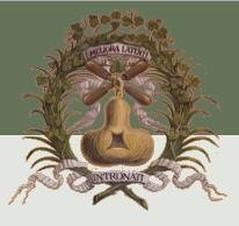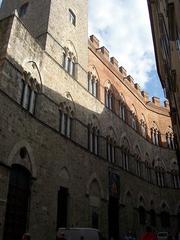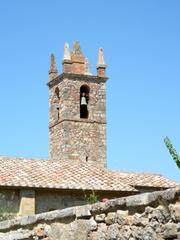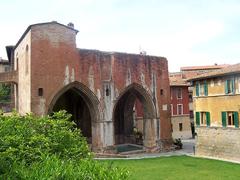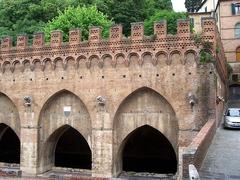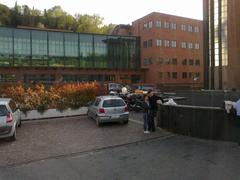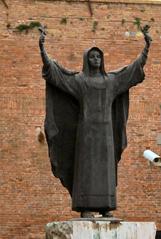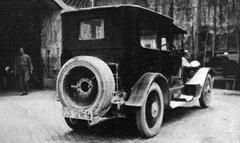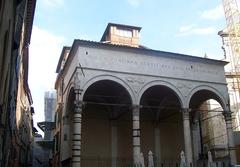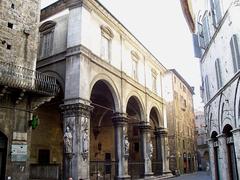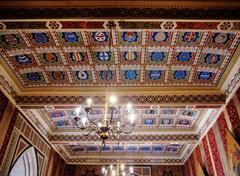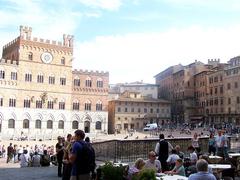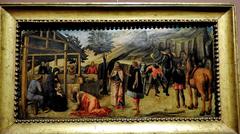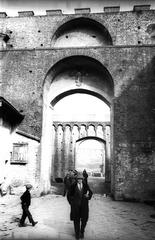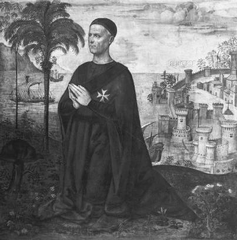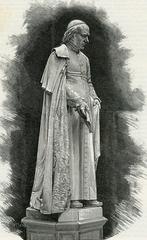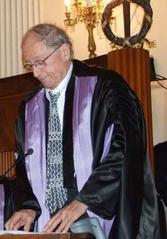Santa Maria A Tressa Visiting Hours, Tickets, and Historical Site Guide – Siena, Italy
Date: 14/06/2025
Introduction
Santa Maria a Tressa, nestled just outside Siena’s medieval walls, offers visitors an intimate encounter with Tuscany’s spiritual and architectural heritage. While it may not share the global renown of Siena’s Duomo or Santa Maria della Scala, this historic church stands as a testament to the city’s deep Marian devotion and rural ecclesiastical traditions, dating back to the 11th or 12th century (Visit Tuscany; Understanding Italy). This comprehensive guide provides you with up-to-date visiting hours, ticket information, accessibility tips, and insights into the church’s historical and cultural significance. Whether you are a history lover, architecture enthusiast, or spiritual traveler, Santa Maria a Tressa promises an enriching and peaceful experience in the heart of Tuscan countryside.
Historical Background
Medieval Origins and Marian Devotion
Santa Maria a Tressa’s origins are rooted in the high Middle Ages. First documented in the 11th or 12th century, the church served the spiritual needs of rural communities and pilgrims journeying along the Via Francigena—a major medieval pilgrimage route to Rome (Visit Tuscany; Albergo Minerva). Its dedication to the Virgin Mary reflects Siena’s enduring Marian devotion, a key part of the city’s religious identity, especially during the 13th and 14th centuries.
Architectural Evolution and Artistic Heritage
Originally constructed in the Romanesque style, Santa Maria a Tressa exhibits later Gothic and Renaissance modifications. Although many original frescoes and artworks have been lost or relocated, the church’s evolving architecture mirrors Siena’s broader ecclesiastical trends (Visit Tuscany). Notable restoration efforts in the 19th century helped safeguard its structure, with some preserved artworks now housed in Siena’s Pinacoteca Nazionale.
Spiritual and Social Role
Throughout its history, the church was a hub for local religious life—hosting Marian feasts, processions, and charitable acts, particularly for pilgrims. Its proximity to Siena’s southern gate made it a vital point of welcome and refuge, echoing the traditions of hospitality found at sites like Santa Maria della Scala (Albergo Minerva).
Endurance and Preservation
Santa Maria a Tressa has endured wars, plagues (notably the Black Death in 1348), and societal changes (PlanetWare). The church’s resilience is a testament to the community’s faith and ongoing conservation efforts, supported in part by Siena’s UNESCO World Heritage status (Understanding Italy).
Visiting Santa Maria a Tressa: Practical Information
Visiting Hours and Tickets
- Opening Hours: Typically open daily from 9:00 AM to 6:00 PM. Hours may vary during religious holidays or special events.
- Tickets: Admission is free; donations are welcome to support maintenance and preservation.
- Guided Tours: Available by prior arrangement through local tour operators specializing in Siena’s historical and religious sites.
How to Get There
- By Foot: A 15-minute walk south from Piazza del Campo.
- By Bus: Connected by Siena’s urban bus network; check the official Siena Mobilità website for schedules.
- By Car: Limited parking is available nearby; check local parking rules, especially during festivals.
Accessibility
- The church has limited accessibility for those with mobility impairments due to its historic structure and uneven floors. Contact the parish office in advance for assistance.
Special Events and Photography
- Events: The church hosts Marian feasts and processions, especially during the Assumption (August 15) and Nativity of Mary (September 8).
- Photography: Permitted for personal use, but avoid flash and do not take photos during services.
Visitor Tips
- Visit early or late in the day for a peaceful experience and optimal lighting for photography.
- Dress modestly (shoulders and knees covered); hats off inside.
- Check parish or Diocese of Siena’s website for current Mass times and special events.
Experience Santa Maria a Tressa: Architecture and Setting
Architectural Highlights
Santa Maria a Tressa is a fine example of rural Tuscan church architecture:
- Romanesque Elements: Semi-circular apse, thick stone masonry, and high-set windows.
- Gothic and Renaissance Additions: Later modifications and restored details.
- Interior: Simple and contemplative space with possible fresco fragments and wooden truss roof.
Integration with the Landscape
Set amid rolling Tuscan hills, the church’s stonework and terracotta roofs blend harmoniously with the scenery, offering beautiful vistas for walkers and cyclists on the Via Francigena (Go Ask a Local).
Nearby Attractions and Suggested Itineraries
While visiting Santa Maria a Tressa, consider these highlights for a full Siena experience:
- Siena Cathedral (Duomo di Siena): A Gothic masterpiece with extraordinary mosaics and art (PlanetWare).
- Piazza del Campo: Siena’s iconic shell-shaped square, site of the world-famous Palio horse race (Siena Official Tourism Website).
- Santa Maria della Scala: Former hospital, now a museum complex (Albergo Minerva).
- Torre del Mangia: For panoramic city views (PlanetWare).
A sample itinerary: Visit Santa Maria a Tressa in the morning, lunch in the city center, then explore the Duomo, Piazza del Campo, and Santa Maria della Scala.
Facilities and Visitor Services
- Facilities: No restrooms or cafés on-site; use city-center amenities.
- Accessibility: Historic structure limits access; inquire for assistance if needed.
- Language: Italian is primary; basic English may be spoken in tourism settings. Consider translation apps or guidebooks.
Safety and Local Customs
Siena and the Tressa district are considered safe. Standard travel precautions apply. Respectful greetings (“Buongiorno”/“Buonasera”) and modest attire are appreciated in church settings.
Frequently Asked Questions (FAQ)
What are the visiting hours for Santa Maria a Tressa?
Typically 9:00 AM to 6:00 PM daily; closed during midday and Mass times. Check the parish or Diocese website for exact timings.
Is there an entry fee?
No, admission is free. Donations are welcome.
Are guided tours available?
Tours can be arranged with local operators or by contacting the parish for special visits.
Is Santa Maria a Tressa accessible for those with disabilities?
Accessibility is limited due to the historic structure; contact ahead to discuss needs.
Can I take photographs inside?
Yes, but avoid flash and do not photograph during services.
Conclusion
Santa Maria a Tressa offers a peaceful and authentic window into Siena’s spiritual and architectural legacy. Its centuries-old history, serene rural setting, and free admission make it a rewarding destination—whether you’re a pilgrim, art lover, or traveler in search of Tuscany’s quiet treasures. Plan your visit by checking current hours and events, respect local customs, and enjoy the tranquil beauty of this unique site.
For up-to-date information and audio guides, download the Audiala app and follow our channels for the latest tips on Siena’s historical sites.
Summary
Santa Maria a Tressa is a remarkable example of Siena’s religious and architectural history, offering visitors free access, a peaceful setting, and deep-rooted Marian traditions. Located just beyond Siena’s city walls, the church provides an ideal starting point for exploring Tuscany’s spiritual and cultural treasures. Combine your visit with Siena’s iconic landmarks for a rich and memorable journey through the city’s past and present (Understanding Italy; Visit Tuscany; PlanetWare; Siena Official Tourism Website).
